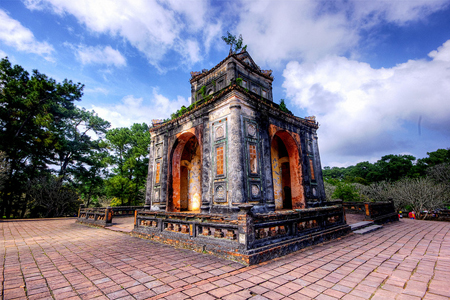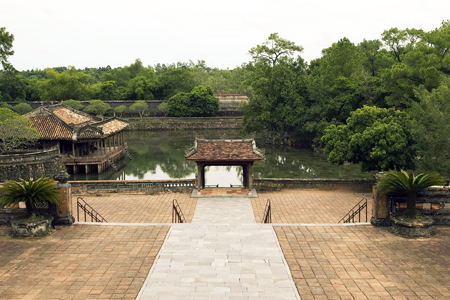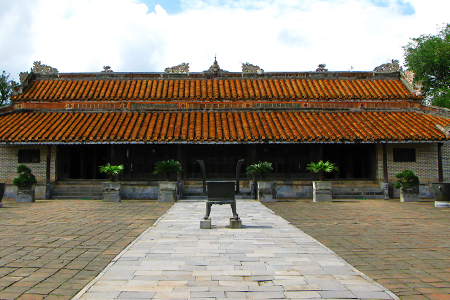Skim through the history of Hue, marvel at the typical architecture and soak up the illusion of a park, packed with frangipani trees and grove of pines on a trip to Tu Duc tomb. Nestled in a narrow valley in Duong Xuan Thuong Village, stretching along the poetic perfume river, 8km from Hue City, the imperial tomb of Tu Duc is considered to be the most beautiful and picturesque sites of Hue, and the largest works of architecture of Nguyen Dynasty’s royal palaces and tombs. This tomb set in a beautiful natural and bathed by a Lake, 6 km outside of Hue, was used by the Emperor Tu Duc in life as Summer Palace and spiritual retreat.

Emperor Tu Duc designed it himself and had it constructed between 1864 and 1867 to use before and after his death. To build this tomb, an incredible amount of money and labor were used, thus resulted in a rebellion of workers. Its former name is Van Nien Co; however, the tomb was renamed as Khiem Lang. In addition, all the constructions’ names were changed to bear the word Khiem (Modesty) in their names, as the king wanted to express his humility.
Although people call it a tomb, it actually is not the burial site of the King. The real resting place of the King still remains mysterious as all the people involved in burring work was beheaded to protect the tomb from grave robbers.
The design of the tomb is said to clearly reflect the profound knowledge and romance of the king’s characteristics. Unlike other tomes, the tomb of Tu Duc is a set of construction including lakes, mounts, palaces, pavilions, temples, altars, etc, which offers a romantic and relaxing ambiance as it also incorporates some buildings for the king’s residency. Tu Duc used this site as a retreat place where he could cite or compose poetry, read books.

The tomb is divided into 2 parts the temple area and the tomb area. The former surrounded by a solid octagonal wall is an illusion of a scenic park, packed with lakes, hills amidst the lushness of frangipani trees and grove of pines. The most notable sites inside the temple area are Luu Khiem Lake where where the Emperor used to come to admire flowers, compose poems, read books; and Hoa Khiem Palace, which was once the working place of the King and now has become the worshipping place of the King and his wife.which used to be the Emperor's working place, and is now the altar devoted to the Emperor and the Queen. On the right of Luong Khiem Palace stands On Khiem Palace, where the royal utensils are kept. On the left of Luong Khiem Palace is Minh Khiem theatre considered as the oldest theatre in Vietnam; and it is where the dress-up photos opportunities are available.

The remaining part is the tomb area, consisting of the Honour Courtyard, the Stele Pavilion and the seplucre. The Stele Pavilion of this tomb is known as the biggest one in Vietnam, in which the king has inscribed about his life by himself.
Sophisticated architecture, charming landscape, the harmonious combination of the old monuments of old feudal time and natural atmosphere makes Tu Duc tomb a must-see in the region. This blend experience therefore is well worth a visit.

